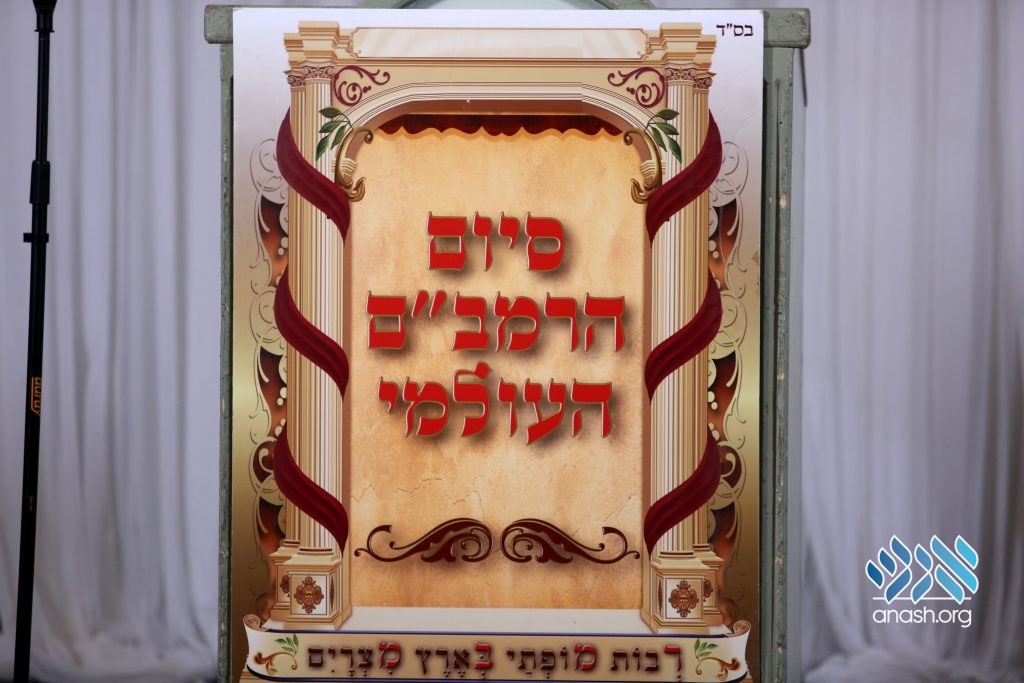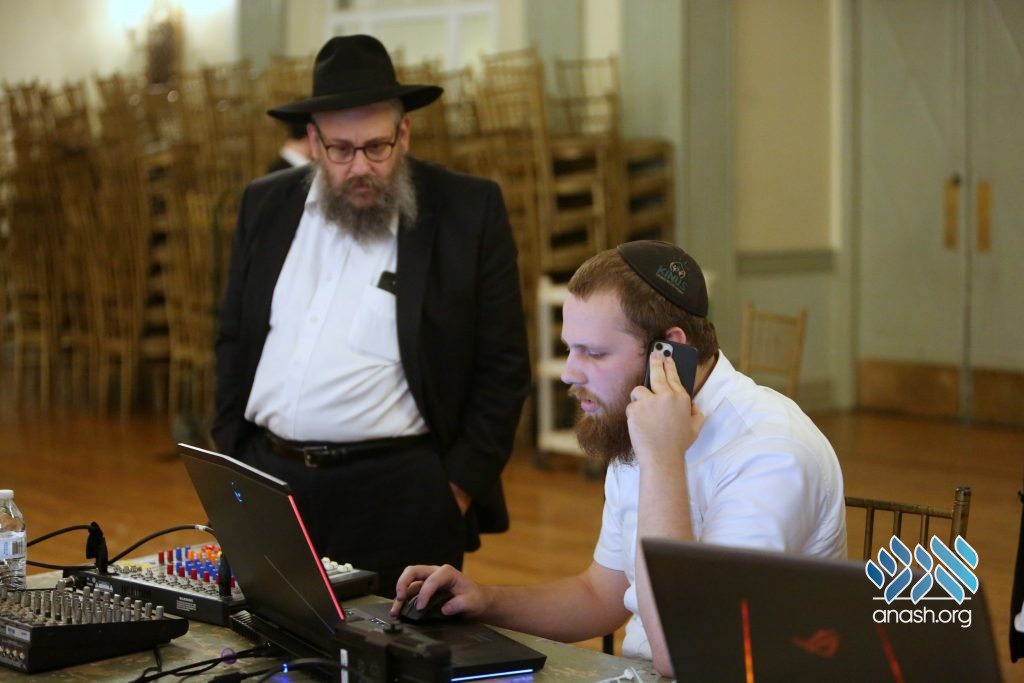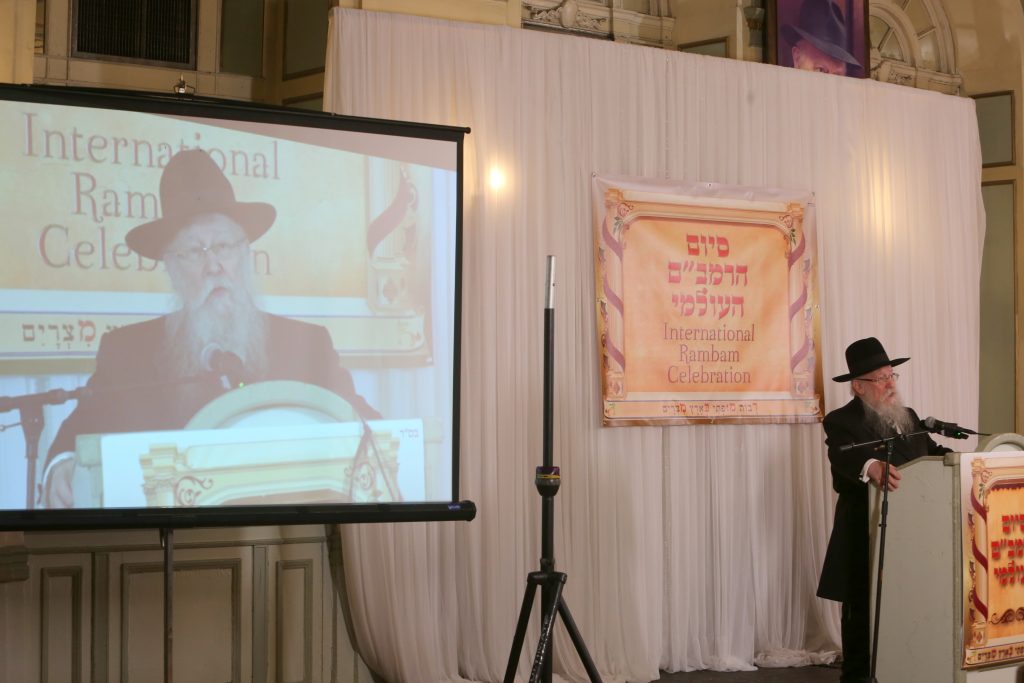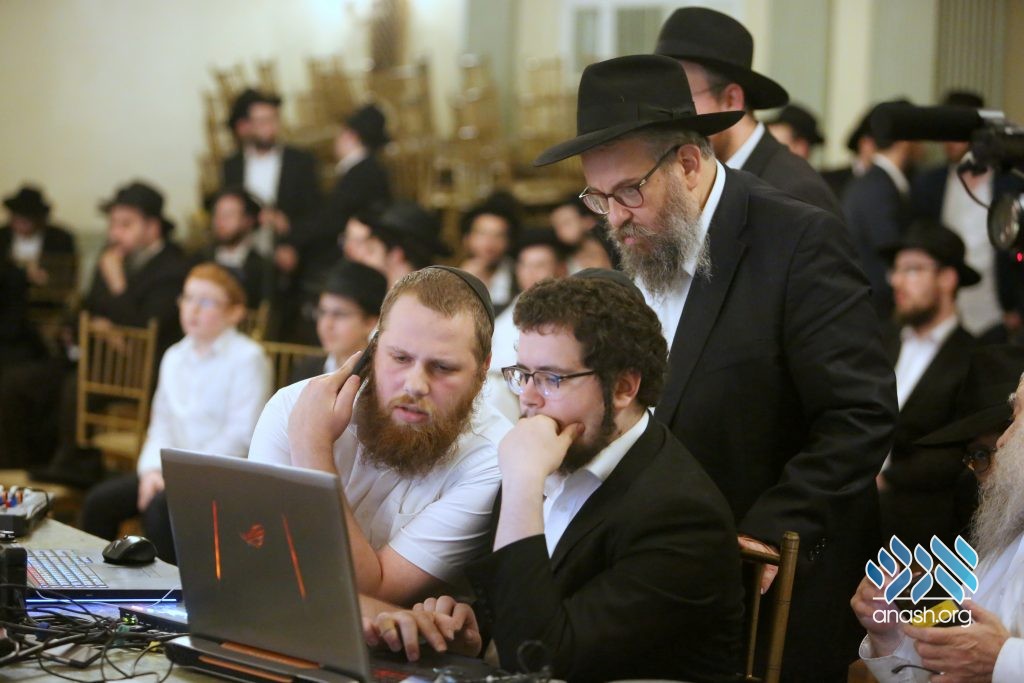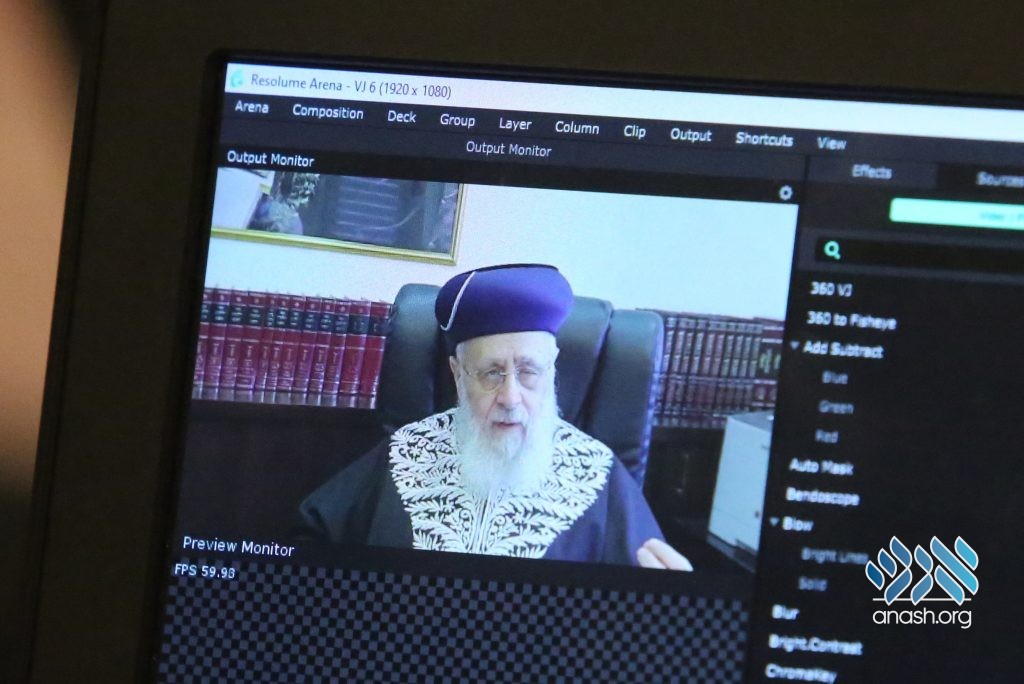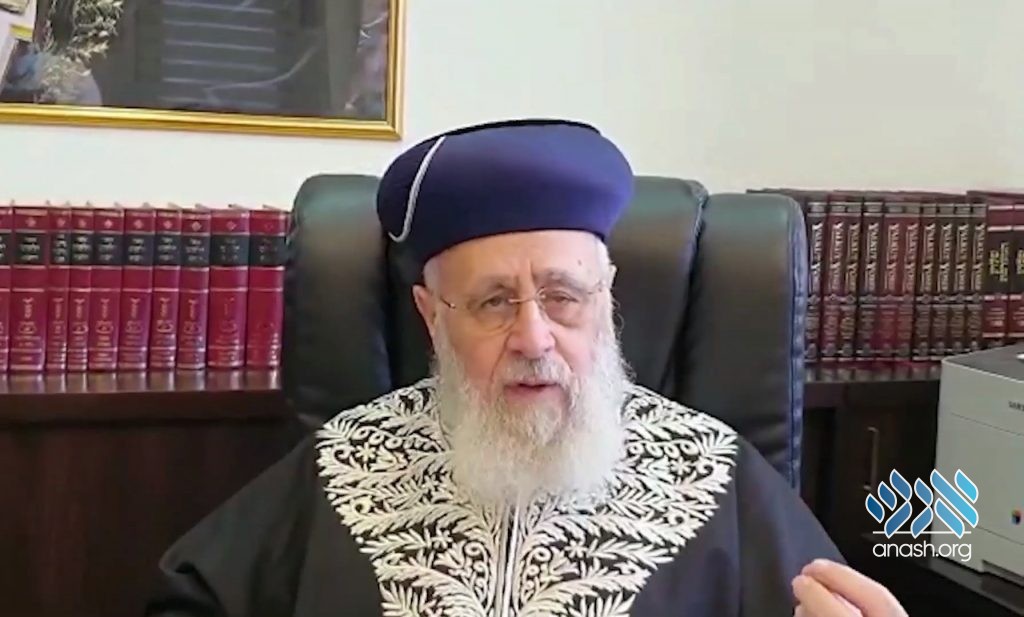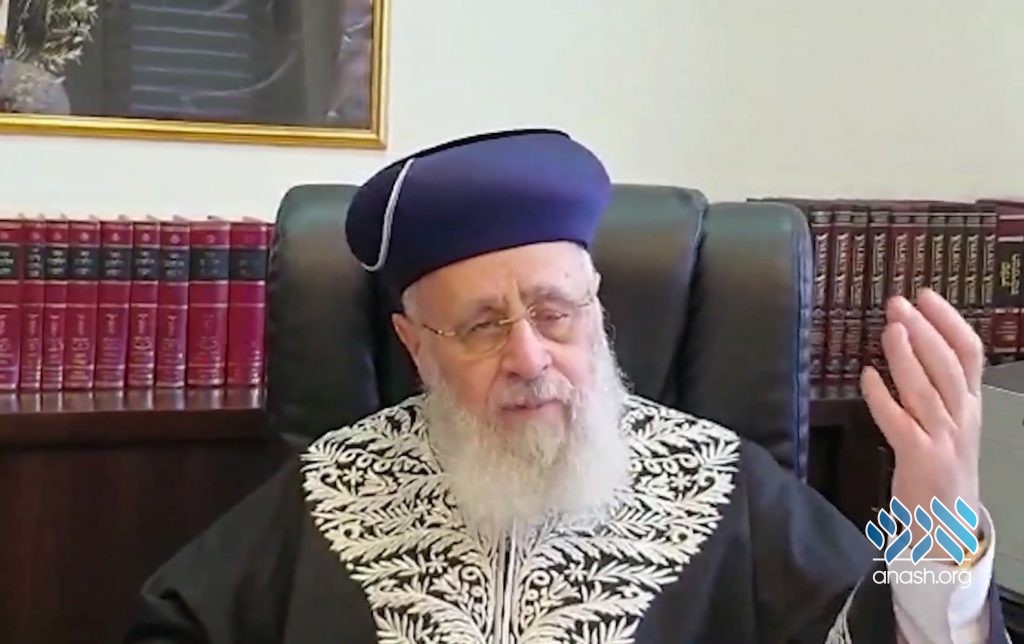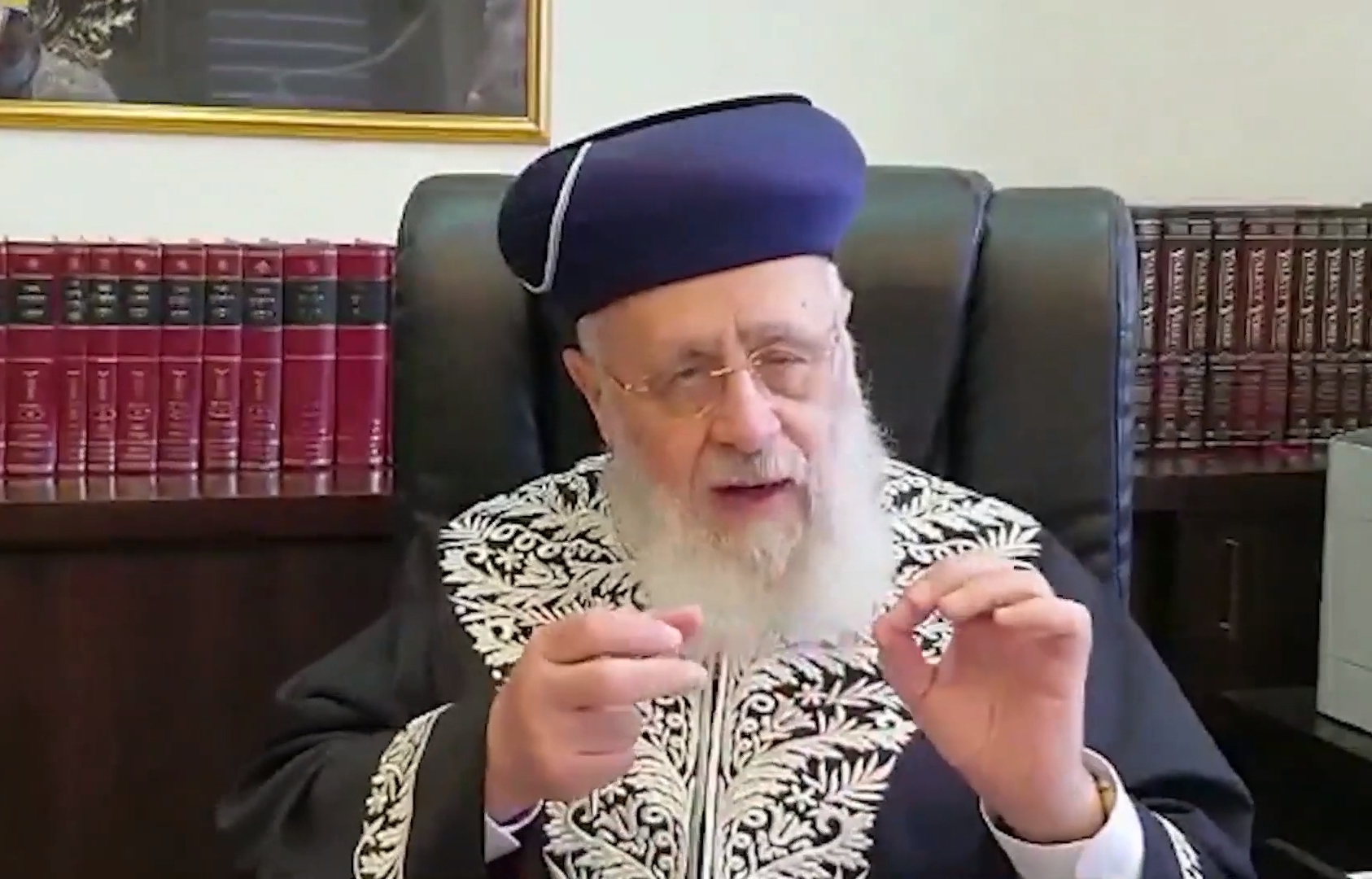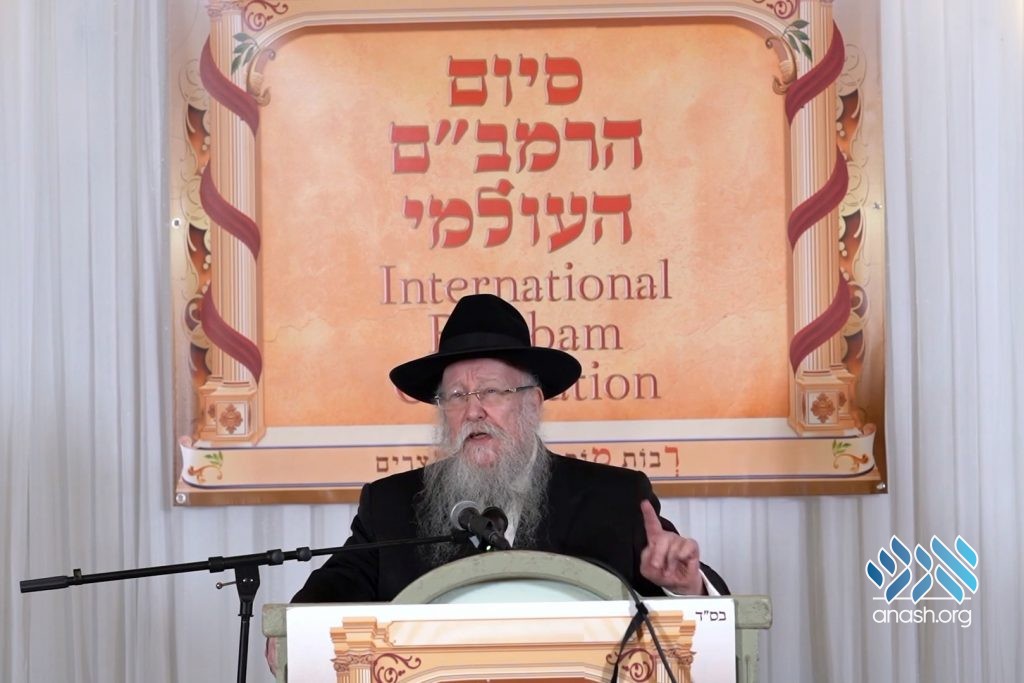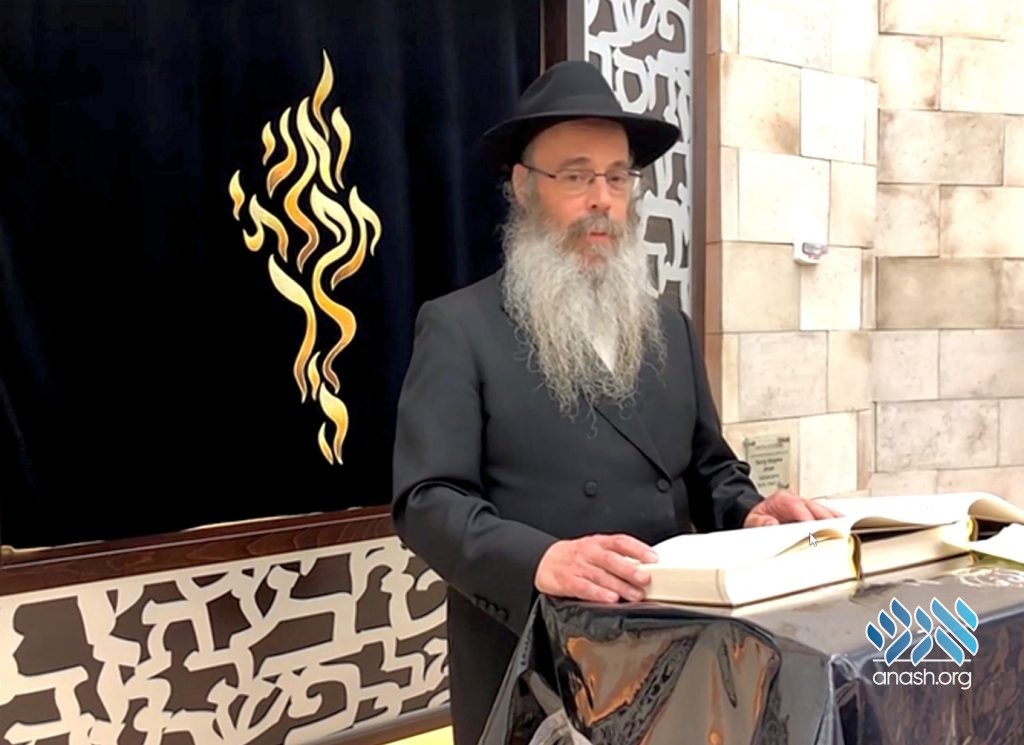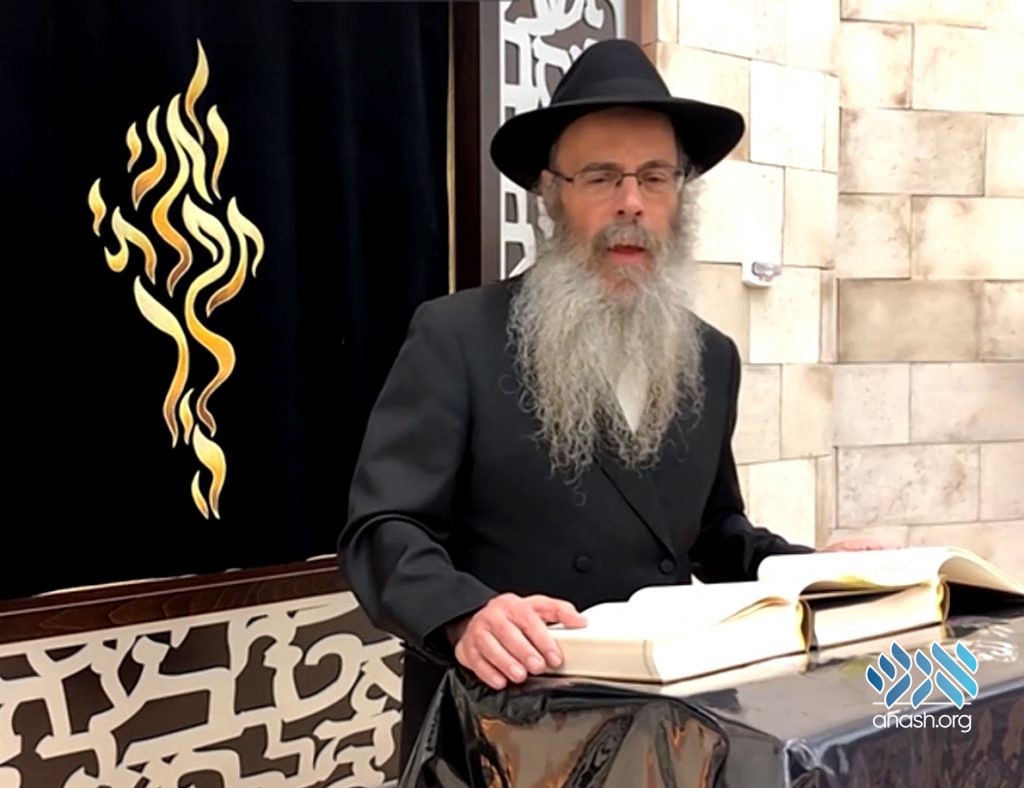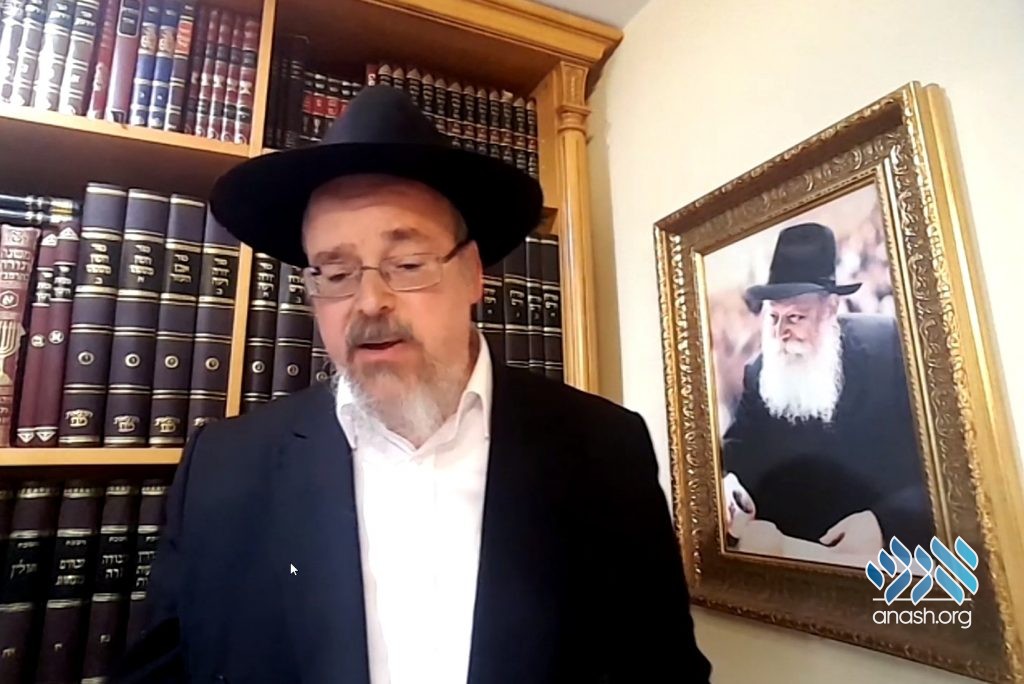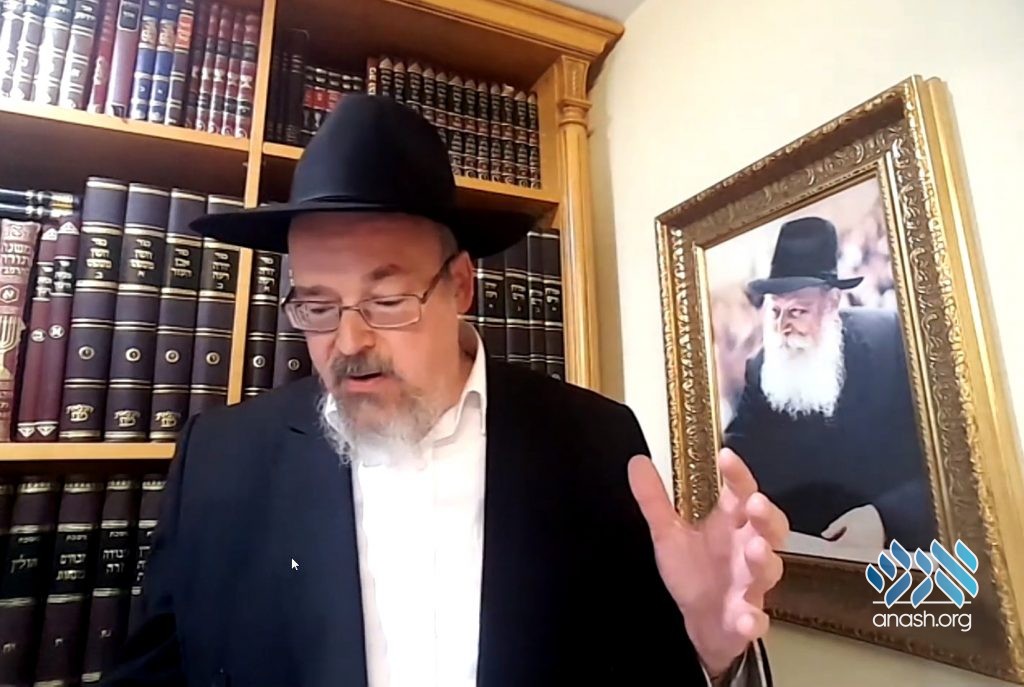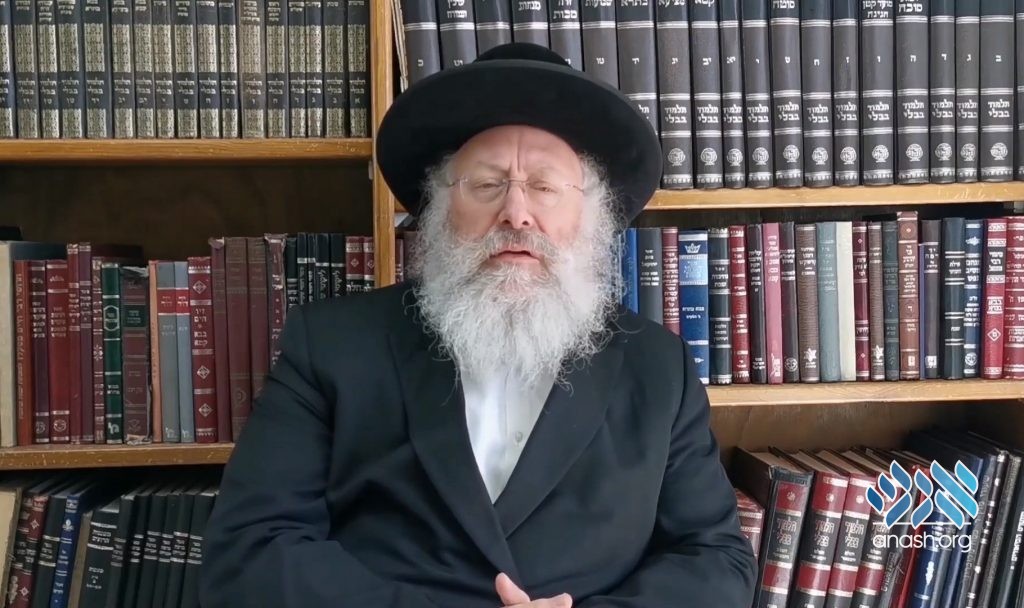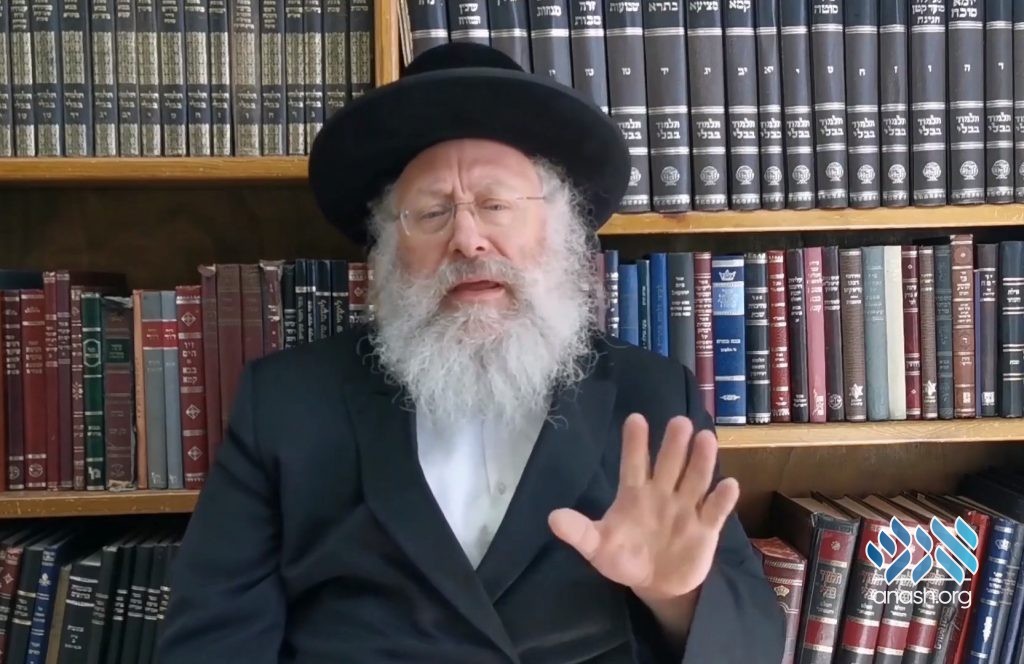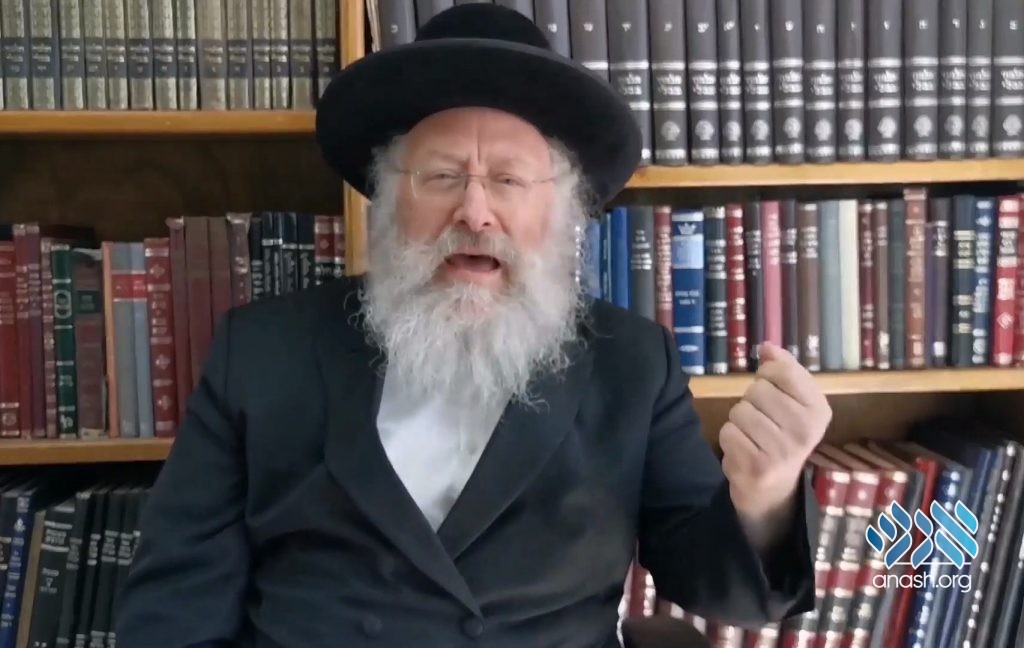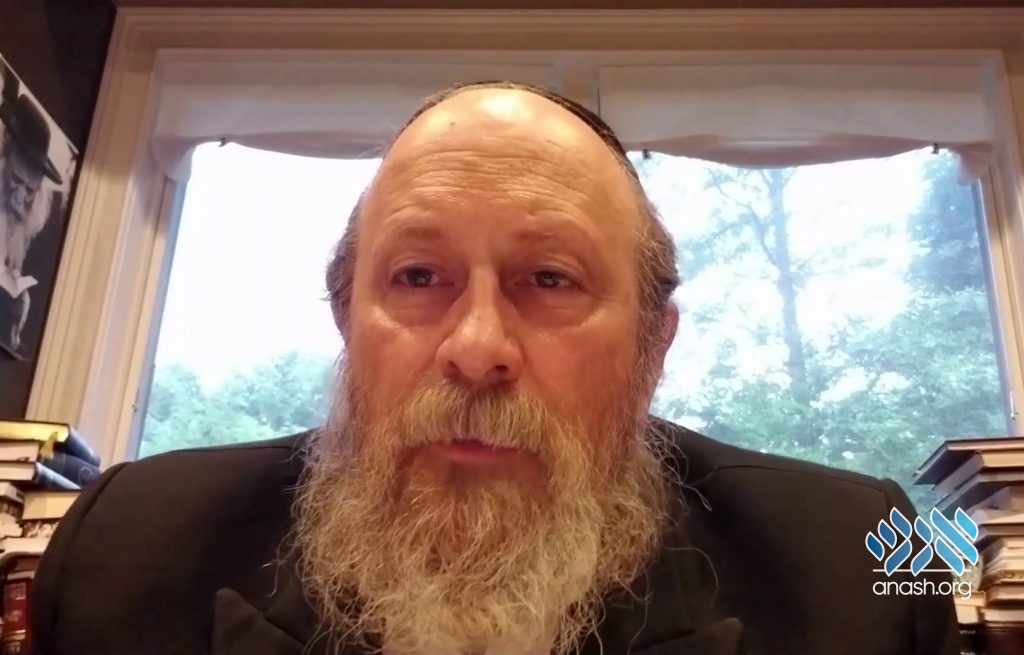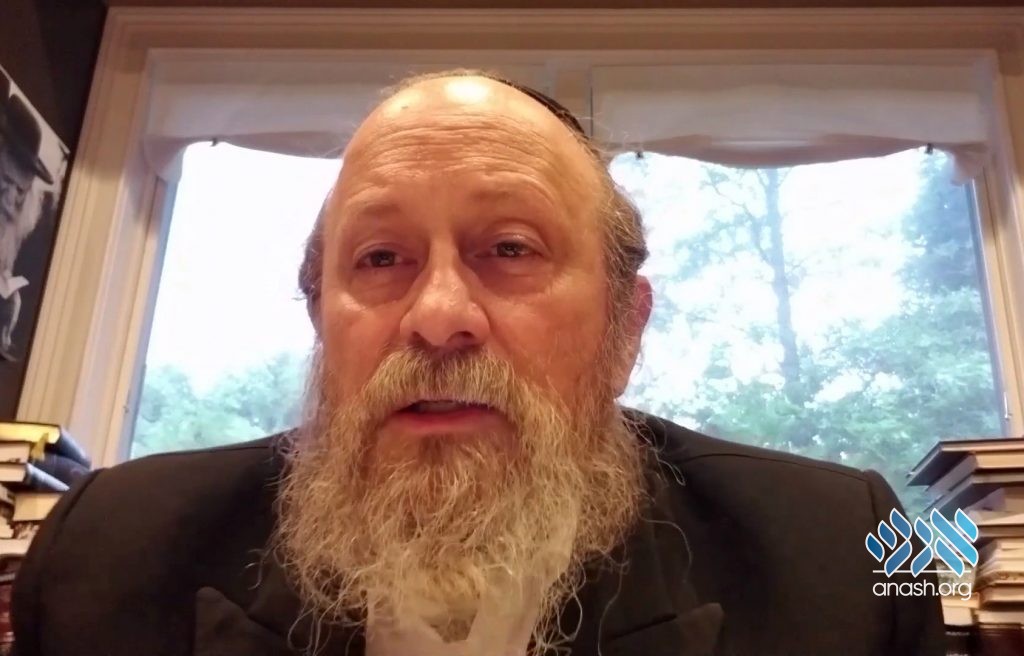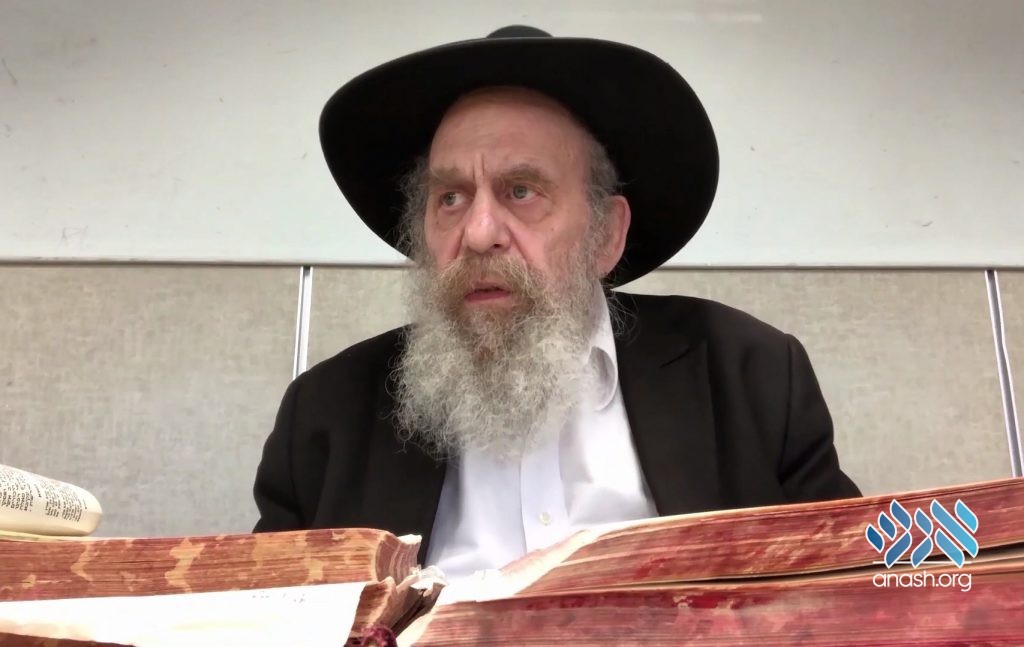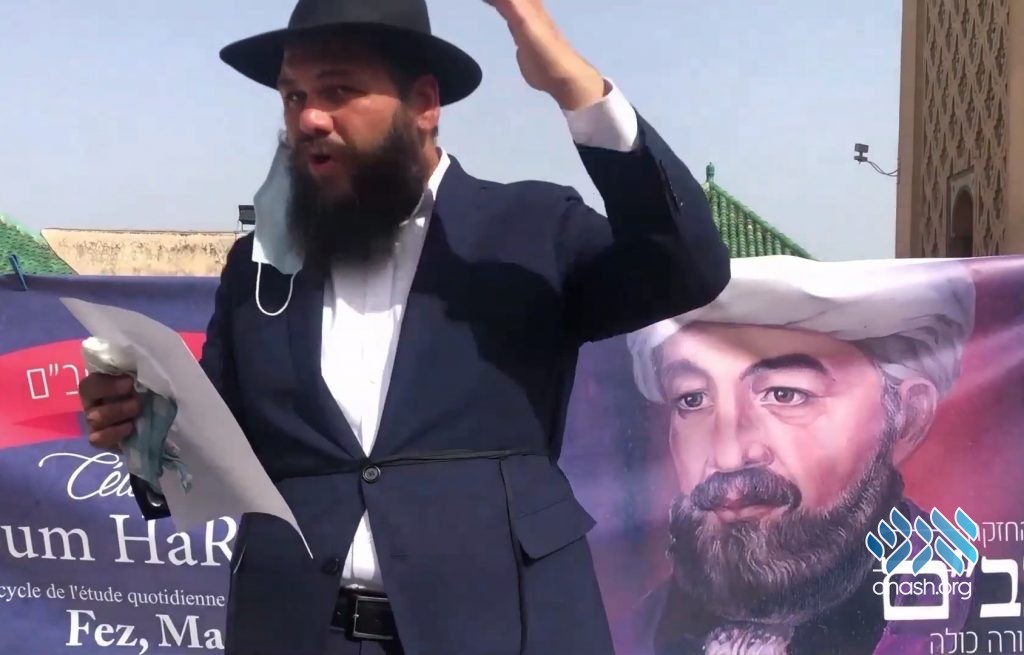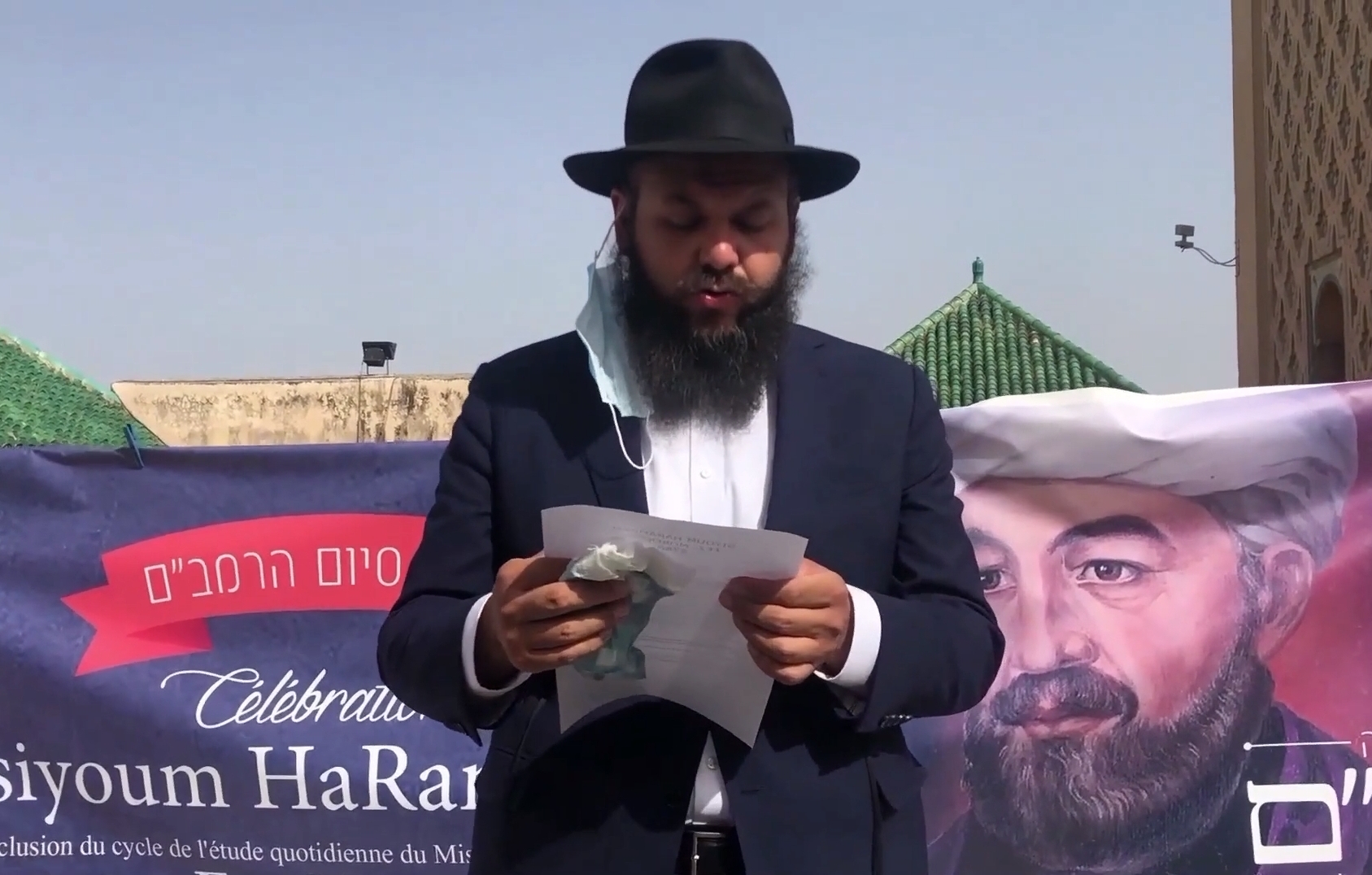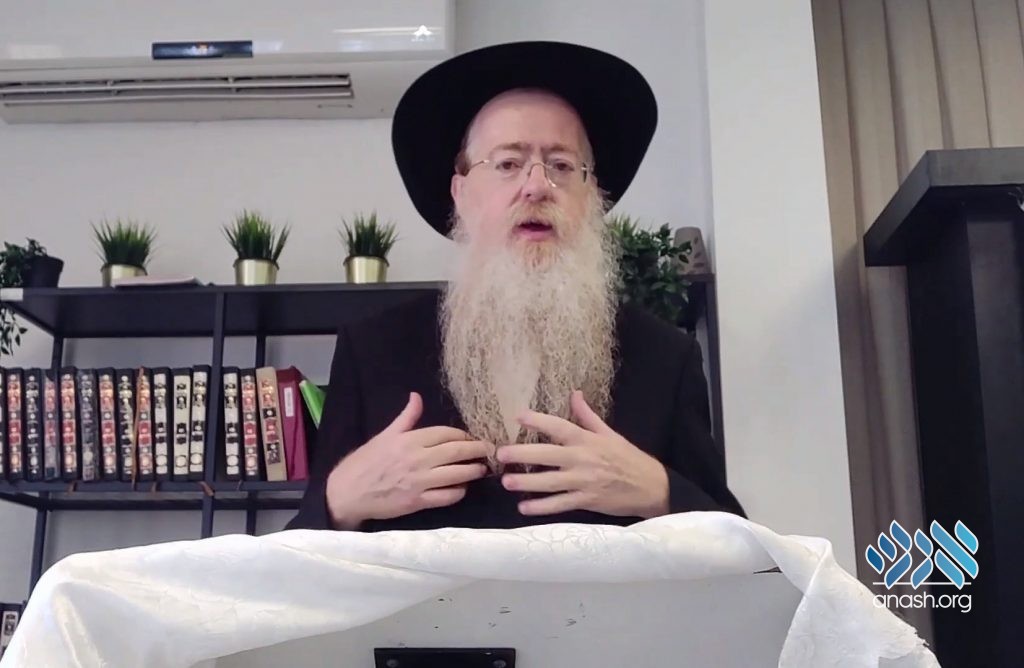The Siyum Harambam Haolami of 5780 was unlike any before it, with a limited crowd in person, but thousands logging in from around the world to join the special program.
By Rabbi Shmuel Pevzner
The “Siyum HoRambam HaOlami,” as it was named by the Rebbe, became a magnificent event held annually with much pomp and joy. The celebratory gathering honors the Rambam, the Rebbe—who established the daily study—and those who completed the study cycle.
This year, things had to be done differently. In New York—where the International Siyum is usually held—as in most locations, government regulations do not allow large gatherings, so the Siyum committee pondered how the annual celebration could take place.
Participants From All Over the World
“After much thought,” says Rabbi Shmuel Butman, Director of the Central Lubavitch Youth Organization and Chairman of the International Siyum HoRambam, “we realized that our predicament really works to our advantage. Though we regretted not being able to host thousands in person, our virtual celebration will enable thousands worldwide to participate in the Siyum.”
Preparations kicked off for the global event, and as every year, the beautiful Oholei Torah hall was rented for the occasion. When the night of the Siyum arrived, a special team stood on hand to deal with the technicalities of broadcasting the event, and the emcee and chairman of the Siyum, Rabbi Butman, approached the podium. Thus commenced the Siyum, a triple celebration, marking the conclusion of the 39th cycle for the three-chapters-a-day track, conclusion of the 13th cycle for the one-chapter-a-day track, as well as the conclusion of the Sefer Hamitzvos study cycle.
Keeping with tradition, the event opened with the recital of the Rebbe’s kapitel for this year, chapter 119. Selections of the kapitel were sung by the Yeshivas Kayitz Crown Heights choir, directed by R’ Boruch Sholom Benshimon. The chairman thanked the choir and the yeshivah’s menahel, Rabbi Yitzchok Wolf.
“Opening with a Dvar Malchus,” a clip was shown of the Rebbe making the siyum on the first study cycle in 5745, followed by the sichah discussing the Sheva Mitzvos Bnei Noach, a subject that was just studied in the final chapters of Mishneh Torah.
The Importance of Studying Rambam
A distinguished guest was invited to speak—the Rishon Letzion and Chief Rabbi of Eretz Yisr0el, Rabbi Yitzchak Yosef—who opened with a blessing to those completing the 39th Rambam study cycle, and stressed the importance of learning Halacha every day, quoting from the Gemara (Brachos 8a) that after the destruction of the Beis Hamikdash, Hashem dwells only in the four cubits of Halacha.
Rabbi Yosef went on to encourage the magidei shiurim of Rambam classes to check in Shulchan Aruch how the Halacha is decided, and point out during their class when it is different than the Rambam’s ruling. He concluded with many blessings for those who study Rambam, and noted the importance of having a consistent study regimen since it has permanence.
Preparing for the Redemption
The chairman, posed a general question: What is the idea of the Rambam study that the Rebbe instituted? Obviously we aren’t able to understand the ultimate depth of the Rebbe’s intention, but from what the Rebbe revealed to us, there seems to be a clear and fundamental goal.
At the farbrengen when the Rebbe formally accepted the nesius, Yud Shvat 5711, (1951) he made it clear that the task of his “administration” it to bring bring Moshiach. It is self-understood that studying Rambam has a central role in this task.
The Rebbe spoke passionately about three areas of ‘wholeness’:
Shleimus ha’aretz – the wholeness of Eretz Yisroel, of which the Rebbe’s strong stance is known throughout the world.
Shleimus ha’am – the wholeness of the Jewish people, for which the Rebbe fought for many years, and it is now clear to everyone how tragic it is to register non-Jews as Jews.
And finally, shleimus haTorah – the wholeness of Torah, how one can complete the entire Torah by studying Rambam! With these three areas of shleimus, we reach the Geuloh Shleimo — the true and ‘complete’ Geuloh.
The Rebbe once spoke about astounding statement engraved by the Rambam’s resting spot: “From Moshe to Moshe no one arose like Moshe.” Though the origin of this slogan isn’t clear, many great sages throughout the generations saw it and didn’t dispute it.
The question arises: How is it that not one individual arose like the Rambam throughout all the generations of the Prophets, Tannaim and Amoraim who lived prior to him? Didn’t the Rambam base his work on the Talmud, which is in turn based on the Mishnah?
“An answer I once heard,” said Rabbi Butman, “is that the slogan isn’t discussing who was greater. There is a famous Gemara in Bava Basra which says that Shmuel wrote his sefer, Dovid wrote his and so forth. Each of the Nevi’im and Tannaim recorded specific portions of Torah. Even the Mishnah doesn’t cover certain areas of Torah such as the laws of Teshuvah and of Moshiach. The only one who recorded the entire Torah is Moshe Rabbeinu, and after him was Rabbi Moshe ben Maimon.”
The Uniqueness of This Year’s Siyum
“Today we are concluding the 39th cycle and immediately beginning the 40th,” continues the chairman.
What is most striking are the facts that the Siyum is taking place on Shivo Osor b’Tamuz, and next year’s Siyum is on Gimel Tammuz!
The Rambam writes in Hilchos Taanis, and this halacha was quoted often by the Rebbe: “All these fast days will be nullified in the days of Moshiach, and more so, they will turn into festivals and days of joy.” It is thus obvious that the day of the current Siyum already has the potential to become a Yom Tov, and the Siyum of the 40th cycle on Gimel Tamuz next year brings us to the Geulah!
Our ancestors spent 40 years in the desert before entering the “Eretz Tovo Urechovo” – the “good and spacious land” Eretz Yisroel. We also find that the Mabul lasted 40 days and nights, and the Alter Rebbe explains that the 40 days of the Mabul correspond to the 40 se’ah of a Mikvah, as the Mabul brought purity to the world. Stating clearly that the number 40 has a special significance in all situations.
Accordingly, the number 40 holds special significance to us, as we—similar to our ancestors—await the end of our exile when we will enter the Promised Land –with the coming of Moshiach. We are beginning the 40th cycle of Rambam, to complete it on Gimel Tammuz, and we are leaving the Galus to come to “ Tovo Urechovo” –the “good and spacious land” with the true and complete redemption.
Moreover, we don’t need to wait until the next Siyum on Gimel Tammuz, rather as the Rebbe Rashab famously explained the statement at the conclusion of the Pesach Seder “Leshono Habo-o Birusholayim” — “Next year in Yerusholayim”—the redemption will take place right away, and consequently we will be in Yerushalayim next year!
“Similarly,” stressed the chairman, “right from the start of the 40th cycle we will be transported all together to Yerushalayim with the true and complete Geulah!”
Total Submission to the Rebbe
Invited to conclude the 39th cycle was Rabbi Yosef Yitzchok Groner, the Rebbe’s shliach in North Carolina and board member of Merkos , who made the Siyum in memory of his father, the unforgettable secretary of the Rebbe, Horav Yehuda Leib Groner z”l, who passed away recently.
After studying the final halachos in Rambam, Rabbi Groner described the complete submission and nullification that his father exemplified during the 44 years he merited to serve the Rebbe. His father had a special connection to the Rebbe’s takanah of Limud HaRambam, and that notwithstanding all of his father’s urgent tasks, his daily Rambam study took top priority.
The chairman noted that Rabbi Leibel Groner z”l never missed participating in the annual Siyum.
The Rov Who Would Never Forgo Rambam Study
To begin the 40th cycle was invited Rabbi Yosef Yitzchok Schwei, shliach of the Rebbe in Luton, England, in memory of his father, Horav Aharon Yaakov Schwei a”h, Moro D’asro and member of Beis Din of Crown Heights, who passed away recently.
After studying the first halachos in the Rambam, Rabbi Schwei spoke emotionally of his father’s dedication to the Rebbe’s mivtzoim, and particularly Rambam study and the Siyumim. Once, after his father suffered a cardiac arrest and miraculously recovered, he was discharged from the hospital on the day of the Siyum HaRambam. He expressed his desire to participate in the Siyum, and his rebbetzin, may she be well, worried for his health and tried to dissuade him. But he wouldn’t hear of it and he was so happy that he could attend.
Third-Generation Participant
At this point, the chairman called upon the Chief Rabbi of Bnei Brak, Harav Yitzchak Eizek Landau, while pointing out that Rabbi Landau’s participation in the Siyum is a perpetuation of the tradition amongst the Rabbonim in the Landau family. His grandfather, Harav Yaakov Landau z”l, who was a Rov by the Rebbe Rashab, made the first Siyum on Chol Hamoed Pesach 5745 in Yerusholayim. His father, Harav Moshe Yehuda Leib z”l, participated many years in the annual Siyum, and now his son and successor as Chief Rabbi of Bnei Brak is participating in the International Siyum.
Rabbi Landau spoke in Hebrew and discussed the beginning of Rambam’s Hilchos Talmud Torah regarding the obligation and privilege of women in their personal Torah study and that of their husbands and children. He concluded with a call for all men, women and children to join the Rambam track most suited to them.
“As Waters Cover the Ocean” – The Complete Geulah
Rabbi Moshe Weinberger, the rabbi of Eish Kodesh in Woodmere, Long Island, spoke of the final words of the Rambam, where he quotes the posuk, “For the world will be filled with the knowledge of G-d as waters cover the sea.” In Hilchos Teshuvah, where the Rambam also quotes the same posuk, he omits the words “as waters cover the sea” since this absolute immersion in G-dliness is only by the complete Geulah.
He told a story of a young girl who passed told the Rebbe by dollars, “Lubavitcher Rebbe I love you.” The Rebbe gave her a dollar and then a second one, saying “This is for the love.” Rabbi Weinberger concluded with emotion that by fulfilling all of the Rebbe’s holy takanos, we will merit by the Geulah to receive an extra dollar for the love.
Studying the Entire Torah
The gaon and chossid, Harav Ezra Binyamin Schochet, Rosh Yeshiva of Yeshivas Ohr Elchanan Chabad in Los Angeles, speaking in Yiddish, focused on the unique advantage of learning Rambam, by which we fulfill our obligation to study the entire Torah! Especially in this period at the end of Galus, with all the concealment and confusion in the world, it is Torah study that keeps us strong.
“Mazal Tov to all those concluding the previous cycle, and may we merit to continue and study the 40th cycle, with the complete Geulah now.”
The Rebbe Mentioned the Siyum in Fez
The chairman mentioned that during the first Siyum at the farbrengen of 11 Nissan 5745, the Rebbe said that a few days earlier, a group of ten Jews concluded the Mishneh Torah in the Rambam’s house in Fez, Morocco. The Rebbe went on to highlight the significance of a Siyum held in the house where the Rambam prayed, studied and conducted his holy service.
This year, Rabbi Levi Banon, shliach to Casablanca, made a similar Siyum with a group of ten Jews by the Rambam’s house. Notwithstanding the difficult circumstances with the coronavirus lockdown, he managed to come with a group of a Minyan to celebrate the Siyum on the roof of the Rambam’s house. A video of this Siyum in Hebrew and French was shown.
In-Depth Study of Rambam
Rabbi Butman thanked Rabbi Banon for the special Siyum, and pointed out that various new elucidated editions of Mishneh Torah are raising the level of the daily Rambam study to a new level. He then invited Rabbi Tzvi Wilhelm, shliach in north Netanya and director of the HaRambam HaMevuar project, to address the International crowd.
Rabbi Wilhelm discussed the importance of understanding the Rambam we study, and noted how the Rebbe would teach in depth one of the halachos from the daily Rambam at every farbrengen. The beginning of the 40th cycle is a good time to upgrade our level of learning Rambam, and in this way we study the entire Torah as the Rebbe wanted, and once expressed “This is my dream!”
The chairman noted how the members of the Crown Heights Beis Din have throughout the years been steady participants in the Siyum, and regretfully informed the audience that this year the Rabbonim, Harav Avrohom Osdoba and Harav Yosef Yeshaya Braun, have been extremely busy with matters of Pikuach Nefesh and weren’t able to participate. He wished them much success, both physically and spiritually, in their leadership of the Crown Heights community.
Uniqueness of Place, Time, and Participation
The steady Siyum attendee, Rabbi Yechiel Michel Daskal, Rosh Yeshivah of the Vizhnitzer Yeshivah Tzemach Tzadik, opened by pointing to the differences in this year’s Siyum in “Olam, Shanah, and Nefesh.” – “World, Time and Soul.”
Olam – we are sitting at home due to the lockdown, instead of the grand gathering near Beis Chayenu, 770. Nefesh – we are alone instead of being together with thousands of chassidim. And Shanah – the Siyum takes place on 17 Tamuz, a fast day that commences the mourning period for the destruction of the Beis Hamikdash.
In the farbrengen of Shabbos Ki Savo 5744, the Rebbe discussed how the name Rambam contains both an open and a closed mem. The Rebbe explained that there are situations that we understand; these are represented by the open mem. But then there is the closed mem, when we don’t understand what is going on. Still, said the Rebbe, we forge forward. Rabbi Daskal pointed out how the Rebbe’s name also contains both types of mem, and we don’t always comprehend the depth of the Rebbe’s intentions.
Rabbi Daskal went on to deliver a fascinating talk on the Rambam, based on four of the Rebbe’s Sichos. In conclusion, he quoted from a sichah that a chossid’s job is in a way of “Ten l’chacham v’yechkam od”—a true chossid doesn’t wait for the Rebbe to tell him exactly how to do every single thing. Even when it isn’t so clear, a chossid continues his shlichus!
The Next Siyum by the Rambam and Rebbe
Rabbi Butman thanked his son Rabbi Yosef Yitzchok Butman, and Rabbi Shmuel Pevzner for their assistance in arranging the Siyum, and R’ Shamai Chein for the technical help with the broadcast. He reminded everyone about the special horo-os (directives) of the Rebbe for the three weeks, regarding studying about the Beis Hamikdash and adding in Tzedakah.
In celebration of the Siyum, there is more singing, albeit without music due to the restrictions of the three weeks that already commenced. First, a clip was shown of the chazzan R’ Tzvi Hirsch Tsatskis singing the Russian song “Who Knows One” by Kos Shel Bracha. Although the song finishes with the number 13, he added in honor of the takanah of Rambam “Who knows 14?” The Rebbe stopped in wonder, and when the chazzan continued “the 14 books of the Rambam,” the Rebbe put down his Becher and strongly encouraged the singing in 770.
This was followed by the nigun Tziyon Bemishpat Tipadeh, as appropriate for the three weeks. Then, again to the Yeshivas Kayitz Crown Heights choir, who sang the song so identified with the Siyum—“Umalah Ha’aretz Dei’ah es Hashem…”
The chairman concluded by inviting everyone to the next Siyum, on the holy day of Gimel Tammuz, to take place in Yerusholayim together with the Rambam and the Rebbe, where we will celebrate with everlasting joy.



